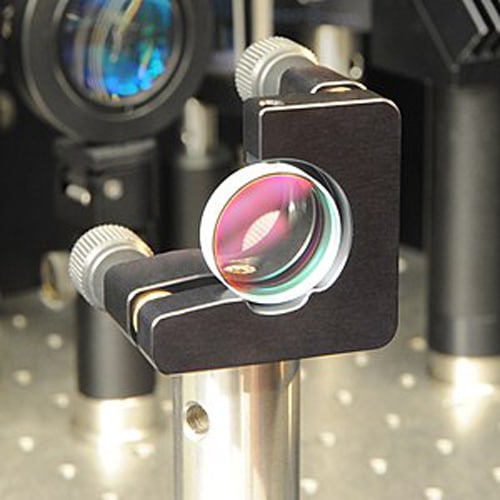When we look in the mirror, we see an image of ourselves behind the glass. That image results from light rays encountering the shiny surface and bouncing back or reflecting, providing a “mirror image.”
But where exactly does this reflection happens?
Martin van Exter and Corné Koks seem to found the answer. They found that it depends on the depth. They likewise have made some calculations that can help them design optical cavities for quantum communication.
Distributed Bragg Reflectors (DBRs) are the standard type of mirror in physics- made from stacked layers of glass with alternating refractive indexes. The mirror works so well. Because of stacked layers, you can attain up to 99.99 percent reflection.
But a consequence of using glass is that Light penetrates the mirror partly. How deep does this penetration go? Van Exter and Ph.D. student Corné Koks wondered.
Using these mirrors, scientists made optical cavities. They placed two small mirrors opposite to each other at the distance of 2 or 3 micrometers, about a 50th the thickness of a hair- with the Light reflecting back and forth.

The distance between the mirrors is only a little larger than the wavelength of the Light. Hence for scientists, it matters how far the Light penetrates the mirror.
Simultaneously, Koks and Van Exter carried a detailed mathematical analysis of electromagnetic radiation behavior in DBRs. They found that three different penetration depths, depending on what exactly one would like to measure.
Van Exter said, “Light within a cavity can be a standing electromagnetic wave, with nodes (where the amplitude is zero) and antinodes (where the amplitude is maximal). The point in the mirror where the node is located was dubbed the phase penetration.”
“This penetration depth is not very deep, typically almost on the surface of the mirror. But sometimes, you don’t use a single wavelength, but a pulse.”
“When you calculate how fast this pulse returns, and therefore from what depth, the penetration depth turns out to be larger. This, we call the frequency penetration depth.”
Next to that, scientists defined a third modal penetration depth, applicable for a sharply focused beam of Light.
In other words, scientists concluded that there are three different penetration depths.
Van Exter said, “Which one should use, depends on exactly what you want to measure. These are no revolutionary changes, but we do show this for the first time, and we note that physicists are often sloppy when calculating their optical setups.”
Journal Reference:
- C. Koks et al. Microcavity resonance condition, quality factor, and mode volume are determined by different penetration depths, Optics Express (2021). DOI: 10.1364/OE.412346
